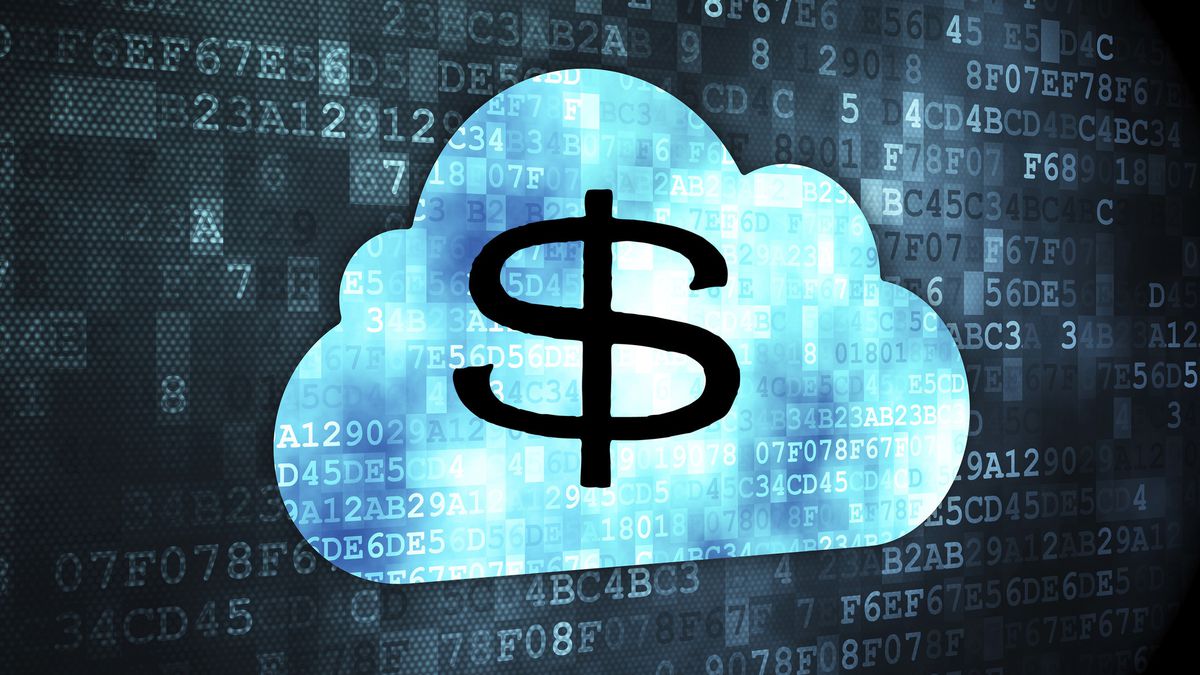- What is tax management digitalization?
- 1. The leading finance software is integrating to SARS
- 2. SARS is upgrading IT systems
- 3. The UK has set the digital standard
- 4. Everyone is cloudifying
- 5. Dispersed workforce
- 6. Criticality of tax clearance
- 7. Record keeping standards have increased
- 8. SARS updated their VAT-estimated assessement process
- Summary
- About Konsise
- Other links you might find interesting
What is tax management digitalization?
Many company executives worry about how to streamline their organisations taxes. The truth is that the tax management process is becoming easier and simpler with the help of digitization and there are numerous benefits to having your company go through the tax management digitalization process.
The first is the ease of access. A digital tax management system provides access to your taxes from anywhere with an internet connection, making it easy to keep up with your taxes on the go.
Another benefit is that digitizing your taxes is a more secure option than relying on manual driven processes.
Every consulting firm is talking about digital tax administration and artificial intelligence, usually so that they get paid by the hour to consult on that topic; such consulting is the exact opposite of the digitalization and automation objective which is the removal of manual labour and increase in productivity.
Now is the time for change. True tax management digitalization is coming to South Africa. It will do to the tax management process and tax industry, what Monday.com did to project management (which also didn’t need a consulting firm to explain it!).
Digital transformation and the digitalization of tax administrations, both domestic and international, is both inevitable and highly beneficial to all the stakeholders involved.
In this article, we list 7 signs that tax management digitalization is coming to all South African companies.
Want to find out more about what electronic tax management can offer? Checkout our eBook.

1. The leading finance software is integrating to SARS
First it was Xero and then it was Sage, inevitably it is only a matter of time before the rest will follow. These forward-thinking accounting software and technologies can submit a company’s VAT Return, the VAT201, directly from the software into the South African Revenue Service (SARS). (Why did it take so damn long, I hear finance managers ask!)
Non-finance software, such as financial statement preparation solutions, has offered integration into SARS eFiling for years, typically in respect of the ITR14. The fact that the big cloud finance software, namely Xero and Sage, have followed suit demonstrates that all the finance software companies will need to add this functionality for their customers, or risk losing them to software providers with SARS integration.
While giving credit to the finance software providers with SARS integration, that functionality is still very limited by comparison to an Electronic Tax Management Software’s (ETMS) integration which includes the retrieval of correspondence (for submissions, audits, verifications, investigations) and statement of account values. Submitting a few lines of data from a VAT201 or IRP6 is actually quite simple, which makes it such a surprise it wasn’t previously offered as a service.
A good Electronic Tax Management Software really stands out when it can remove the burden of the eFiling user from the consistent log-ins that are required to first make the submission, then load the payment, then request a statement of account and continuously monitor the tax clearance status (more on that mine-field later!). It should also ensure you get all those notifications from the Revenue Authority, in a South Africa context our friends at SARS, that they insist you must have received (“go and check your junk mail”), which in reality were just never sent.
2. SARS is upgrading IT systems
Finance Minister, Tito Mboweni, made an announcement during the 2021 annual budget speech to parliament. He announced that SARS would get an additional three billion rand (R3bn) for upgrades to technology and infrastructure. Much of this is focussed on preventing the abuse of transfer pricing schemes but will spill over to the common eFiling system.
Certainly, during the state-capture years, the relative competence and technological abilities of SARS was degraded when compared to the advancements from other countries. Below, we have singled out the UK for its forward thinking IT policies, but other countries, including Russia, have left us in their proverbial dust. (No matter your political persuasions, an efficient and effective Revenue Authority is still the most important pillar of a country’s economic growth).
More investment results in better methods to measure non-compliance of companies, which a Revenue Authority would want to be altered to a real-time basis, in the event of a non-compliance event. The more complexity SARS introduces in respect of measuring non-compliance, the more important it is for companies, in their interactions with SARS, to be aware of their status.
In summary, the more technology SARS have, the more they will measure, and the more companies need to be on their toes in respect to how SARS views their compliance.
When any regulator improves its ability to measure its subjects, digitalization of those subjects inevitably follows; this is no different and affects finance and tax departments equally. This show the increasing need for tax management digitalization.

3. The UK has set the digital standard
The HRMC in the United Kingdom, the UK’s version of SARS, has set the standard in respect of embracing and digitalizing the interaction between a company’s finance software and the revenue authority of the country. They refer to tax management digitalization as MTD, or “making tax digital”.
In summary, any of the country’s corporate taxpayers (a company in the UK with a taxable turnover above the VAT threshold of £85,000) is required to follow the MTD rules which includes
(i) the keeping of digital records, and
(ii) utilise MTD compliant software to submit their VAT return.
Where first world countries go, South Africa inevitably follows. Whilst the priorities of SARS may differ from those of the UK as South Africa has a much higher Gini coefficient than the UK or other first world countries. (The Gini coefficient (or the Gini index) is the measure of inequality among the population). All the signs point towards South Africa adopting a digitized interaction between the revenue authority and the finance software.
Unsurprisingly, South Africa is at the top of the Gini index, together with some other developing countries. This means that the UK taxpayers being targeted have a reasonably even distribution of potential tax contribution. The opposite is true for South Africa, where a minority of companies and people pay a disproportionate amount of the total tax base.
In Finance Minister, Tito Mboweni’s 2021 annual budget speech to parliament there is a clear priority on high net worth individual and corporates, which requires specialised systems and the budget allocated to SARS may not be spent on the digitalization in the same was at the UK, which is clearly driven towards compliance and efficiency.
4. Everyone is cloudifying
In the battle of cloud software versus on-premise software, the results are in.
In an unsurprising announcement, cloud software wins the battle, and it wasn’t even close!!! If you watch Netflix, then just like the rest of the world, you are consuming a service that is based on a third-party cloud computing system. If you use Office365 and OneDrive, like most companies, you are consuming a service that is based on a third-party cloud computing system. It’s truly inescapable, and it’s actually a really, really good thing.
Companies of all sizes, even parastatals and state-owned enterprises, are adopting a “cloud first” policy for all their systems, as they recognize the benefits for all their stakeholders. Even one of the biggest ERP companies, SAP, is migrating all its customers to cloud and its S/4HANA offering.

It isn’t hard to consider a future, within this decade, where the notion of a company purchasing and/or owning hardware (except for the all-important laptop!) would sound outdated. For most forward-thinking innovative companies, that future is already here. The IT infrastructure of a company will consist of laptops/desktops and a good internet connection…everything else will be services that are consumed through a browser. (This is also an argument for the “work-from-home brigade as to why they don’t need to come back to an office).
It stands to reason that a new software solution would reside in the cloud where security, encryption and unrivalled uptime availability cannot be matched by legacy on-premise software solutions.
5. Dispersed workforce
It was coming before the world knew what Covid-19 was, but certainly the pandemic significantly accelerated it. We are referring to the modern era workplace practise of have a dispersed employee base.
Whether the team sits in different countries or different houses in the same town, staff members are no longer simultaneously connected to a common “in-office” network . . . but the need for collaboration has not changed at all. If anything, the requirement for collaboration, now that the conversation around the office water-cooler no longer exists, has significantly grown and requires a mindset of being deliberate.
The opportunity to print out a General Ledger reconciliation and take it to the boss for signature is significantly rarer in recent times and the chances of having the same “work in the office day” is statistically lower.
All of the above increases the requirement for solutions that have an inherent workflow to supplement the collaboration that was previously intrinsic with in-office teams. Software can now replace a staff member standing outside their boss’ office waiting for him/her to give them the time necessary to review their work prior to an urgent deadline. Now the boss can get notifications and perform the same review process in his/her own time.
One of the most utilised feature, especially for South African corporates, is the Review and Sign-Off process, in respect of the working and preparation files in the lead up to the final determination of the figures to be entered into the tax return. Perhaps the absence of personal communication has reduced the trust that senior finance personnel have in their more junior colleagues, or perhaps it’s the fear of making a mistake in the submission. Either way, the opportunity to review the preparation files has been taken with both hands.
6. Criticality of tax clearance
Tax clearance certificates are not new, and neither is the requirement to have a certificate in order to do business with various organs of the state, or even some private companies. What is increasing, however, is the development that a company can go from being fully compliant with SARS which enables the free-flow of orders from their customers, to being non-compliant and sitting on a procurement equivalent of a desert island without a customer order in sight.
To make matters worse, the SARS commissioner is following Google’s lead with regard to the constant tweaking of the Google algorithm. (Google is constantly tweaking their algorithm in order to, depending on your perspective, either benefit the user with more accurate search results or generate more advertising revenue for Google).
SARS, just like the revenue collectors for all governments, are continually updating their measurement of compliance, without necessarily informing companies prior to the implementation of that change. (A more cynical citizen might argue that, similar to Google, the commissioner is making changes to maximise revenue to the coffers of the state!)
If you have ever battled to get a purchase order out of a public entity due to a random amendment to the company’s tax compliance status, you will understand the frustration that these “tweaks” impose. The only way to be on top of this business-critical aspect is to constantly, on a real-time basis, monitor the rating that SARS gives to each of your companies.
The right Electronic Tax Management Software will have an eFiling Robot that will continually check that for you. So, in a single view, a finance and/or tax professional will be able to see near real-time updates to their tax compliance status for every filing type and every company under their management.
7. Record keeping standards have increased
When preparing a tax return, there are certain documents and/or files that are an inherent part of the preparation work. In the context of value-added-tax (VAT), this may include General Ledger detail, the General Ledger Recon, the VAT working document, list of all invoices for the relevant period, authorisation documents and many more! (It is wise to prepare for a potential audit when complete you every return, so the records required to respond the external auditor, or the SARS auditor are exactly where you would expect them to be).
Invariably, a company is placed in a compromised position of requiring historic documents that are “lost” or “deleted from SharePoint” or “lost when the laptop was reformatted” . . . we hear about this all the time.
It is true that the original filing data is kept on the SARS eFiling site, but not the supporting document(s) and other relevant information that always, as fate would have it, is required at the time of an audit. (It’s almost as through the auditors know the one mistake you make last year, and only ask question in that regard. Perhaps thy have adopted Artificial Intelligence after all!)
We interact with many companies and tax practitioners, and we can confidently state that Companies, generically speaking, keep their tax records and reporting in one of the following decade styles:
- Like the 1970s – when companies stored printed documents in lever arch files and kept them first in the office filing cabinet and later at an off-site storage location;
- Like the 1990s – when companies stored electronic documents on the users own computer (which is at risk from being lost when the staff member leaves);
- Like the 2000s – when companies stored electronic documents in SharePoint folders (at risk of deletion of being overwritten by photos of the Christmas party);
- Like the 2020s – when companies store electronic document contextually to the specific tax return in a cloud storage which is encrypted, backed-up and cannot be deleted.
In tandem with the earlier discussion about “cloudification”, a company’s documentation should be stored in terms of the “2020s”, which means storage is achieved with contextual relevance, such as against the specific tax return or audit. 256bit encryption is a minimum, delivered in a software platform built on either Amazon Web Services (AWS) or Microsoft Azure.
A digital tax management platform should, at a minimum, store all the records and documents on a live basis, without the need to archive anything (data storage is ubiquitous nowadays). Such records should be stored in the above-mentioned method of encryption, and accessible with just a few clicks, and the right permission setting.
8. SARS updated their VAT-estimated assessement process
The South African Revenue Service (SARS) has modified the VAT-estimated assessment procedure in response to taxpayers disregarding requests for supporting material. Failure to respond promptly to these requests will result in a significant change in the assessment process, with SARS issuing estimated assessments for non-responsive taxpayers. Once issued, vendors can no longer request corrections for the same period, deviating from the standard five-year window. This adjustment, which allows SARS to implement estimated VAT assessments, aligns with the authority granted under the Tax Administration Act (TAA) introduced in 2011. Those disputing the estimated assessment must furnish supporting documents within 40 business days of receiving the notice, with limited circumstances allowing extension requests. Missing the 21-day deadline after receiving a verification letter prompts SARS to issue an estimated assessment based on input taxes automatically. The standard deadline for supporting document submission is 40 business days unless an extension is granted.
Summary
We hope the above has convinced you that digitisation isn’t just coming, its already knocking on your proverbial front door.
Forward leading finance professionals should be looking for a software platform that meets the digital demands of SARS and their employer, allowing the organisation the benefit of efficiency of processes. It isn’t a question of whether you’ll use software for your tax management and administration processes, it is only a question of when, and which software you will choose.
About Konsise
Konsise is South Africa’s first digital tax management sysyem. A fit for purpose solution for organisations who want the efficiency of automation with the thoroughness of a mature software solution. Konsise boasts hundreds of companies who utilise its cloud software for its workflow, record keeping and interaction with the South African Revenue Service.
Other links you might find interesting:
Yahoo News article on the size of the Tax Management market
CPA Practise Advisor article on the “Tax Department of the Future”


